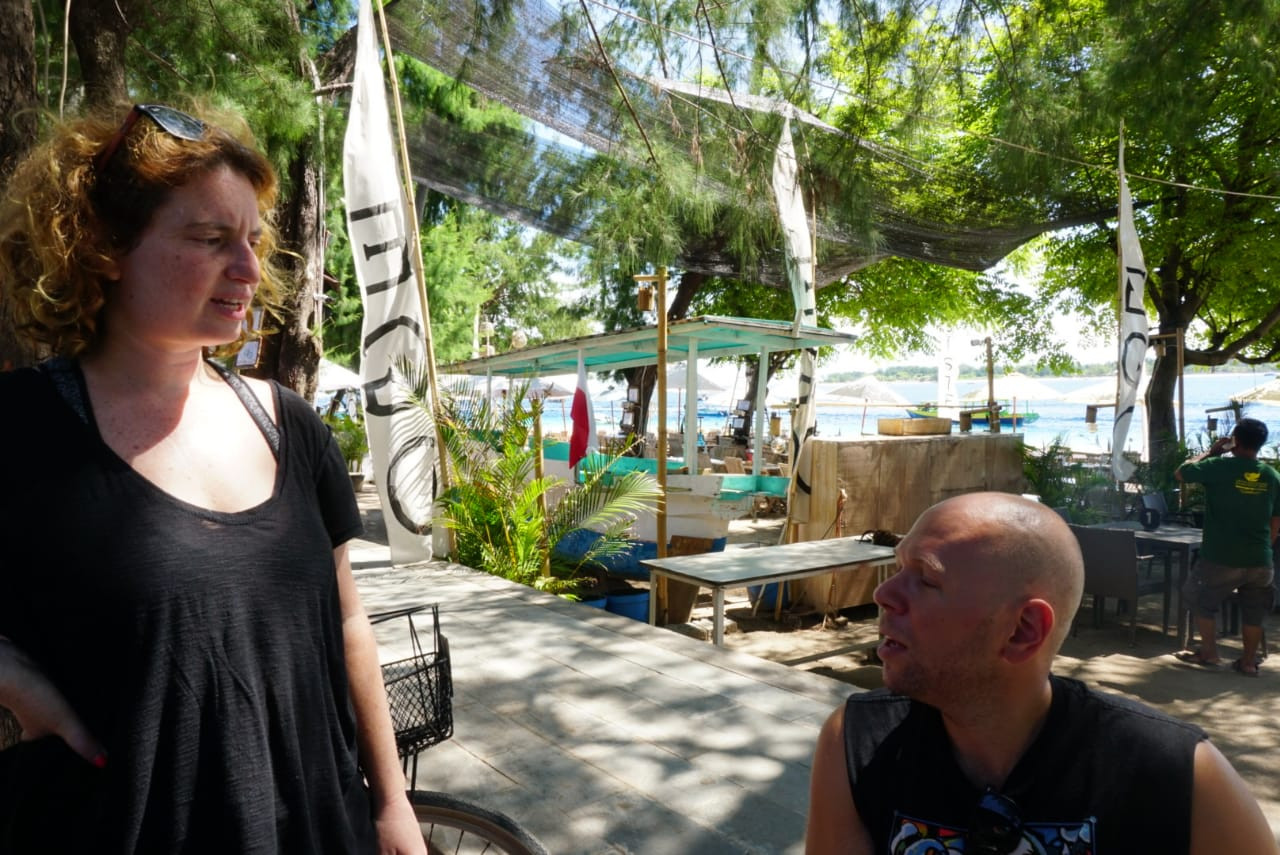Popular Reads
Top Results
Can't find what you're looking for?
View all search resultsPopular Reads
Top Results
Can't find what you're looking for?
View all search resultsLombok tourism taking baby steps toward recovery after earthquake
Months after the earthquake, tourism in Lombok is beginning to see a revival with foreign tourists beginning to arrive in greater numbers.
Change text size
Gift Premium Articles
to Anyone
D
ouglas was aware of the series of earthquakes that struck Lombok, West Nusa Tenggara, six months ago when he decided to visit the island during his six-week holiday.
As a native of California in the United States, the 30-year-old electronic salesperson is no stranger to tremors.
“In terms of fear of not wanting to come here, where we live we have earthquakes very regularly, but we have different building structures so when an earthquake happens, less damage is done,” Douglas, who did not wish to reveal his full name, said while sitting by the beach on Gili Trawangan, a small island off the coast of Lombok.
Gili Trawangan, a popular tourist spot along with its neighboring islands of Gili Meno and Gili Air, was left devastated after the 7.0-magnitude earthquake that hit Lombok on Aug. 5, with the majority of the buildings on the island destroyed.
When The Jakarta Post visited the island recently, construction workers were busy rebuilding the resorts. Small piles of debris left from the earthquake were still visible in the corners of the island.
The island seemed vacant. Beachside cafes, bicycle rentals and scuba diving spots were mostly deserted as their owners looked around, hoping to attract the few passersby.
“We have been going around the Gilis for almost a month now [...] We were in the Philippines, Thailand, Malaysia and Vietnam but this has been the nicest place,” Douglas, who was traveling with his 30-year-old girlfriend Rebecca, said. “I think the island is also trying to change its image from just cheap partying [into] more about enjoying nature.”
Rebecca agreed with Douglas, saying they decided to spend a lot of time in the Gilis because it was easy for them as foreigners to travel there.
“This place is much nicer than everywhere else [similar we have visited],” Rebecca added. “We are already talking about coming back here and we’re not even finished with this trip.”
The number of tourists in Lombok plummeted following the earthquake. The Tourism Ministry reported that between September and December 2018, the figure dropped by a whopping 66 percent compared to the same period the year before.
The ministry's data shows that before the earthquake up to 10,000 foreign tourists arrived at Lombok Praya International Airport every month. After the earthquake, the figure fell to 3,000.
According to Emanuel Prasodjo, general manager for Aston Sunset Beach in Gili Trawangan, the average number of tourists arriving on the island each day before the earthquake could reach 3,000 people. Now, that number is around 900.
“The foreign tourists who come here say they are not afraid of earthquakes as much as they are of terrorists, but we assume domestic tourists are still frightened by the disaster,” said Emanuel.
In Gili Trawangan, and other famous destinations such as Mandalika Beach, Merese Hill and Seger Hill Beach, the Post found almost no local tourists.
The Tourism Ministry confirmed the number of domestic travelers visiting Lombok had dropped considerably, though it has not released the official data.
Emanuel recalled that tourism workers on Gili Trawangan began evacuating guests from the island after they received a tsunami warning via text message from the Meteorology, Climatology and Geophysics Agency (BMKG) last August. No siren or emergency bells were heard beforehand, he said.
“Even now, months after the earthquakes, we have not received any disaster mitigation training from the central government,” he added. “Understandably, that [August’s earthquake] was the most significant disaster we have ever had here, but we have had many smaller earthquakes in previous years.”
By February, around 50 percent of the 500 hotels and restaurants on Gili Trawangan had returned to normal operations.
Tourism Ministry assistant for international marketing Nia Niscaya said the Lombok earthquake, along with the earthquake and tsunami in Central Sulawesi in September and the Lion Air crash in October, had greatly affected Indonesia’s tourist numbers in 2018.
On top of that, Indonesia also saw the eruptions of Mount Anak Krakatau in the Sunda Strait, Mount Agung in Bali and the Banten tsunami in the same year.
“We had a target to attract 17 million international tourists last year but only achieved 15.8 million,” Nia said at a press conference. “This year, however, we believe we can attract 20 million tourists, as hard as that may be to reach.”
The government, she said, had rolled out a lot of measures to promote Lombok and other destinations in Indonesia following the series of disasters, such as by offering all-in-one tourist packages, maximizing promotion in Indonesia’s tourism hubs across the world as well as encouraging tourists from neighboring countries to visit Indonesia.
“People in neighboring countries have geographical and cultural proximity to us, so it is far easier for us to reach out to them and it is cheaper for them to visit our destinations,” Nia added.










